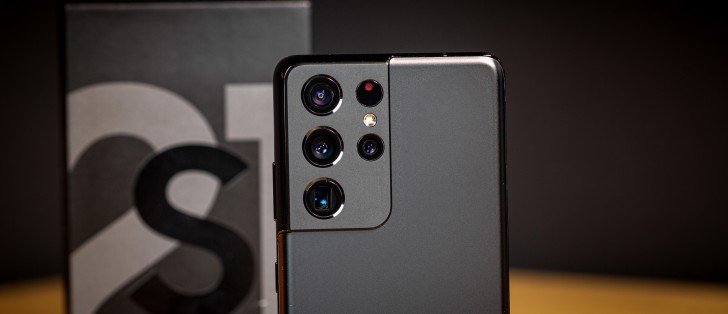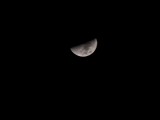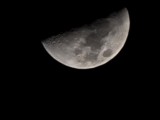Samsung Galaxy S21 Ultra 5G review

Ultra-packed quad-camera
The Samsung Galaxy S21 Ultra has one of the most versatile camera setups available to date and hardware that's worthy of the Ultra moniker. Unlike the Galaxy S20 Ultra, the S21 Ultra offers two telephoto snappers for proper 3x and 10x optical zooms, with no trickery involved.
The primary camera uses Samsung's latest 108MP ISOCELL HM3 1/1.33" sensor with 12,000 x 9,000 pixel grid and 0.8µm pitch. It has a Nona-pixel Bayer filter pattern that allows for 9-to-1 pixel binning, so the effective pixel size becomes 2.4µmm and the resolution 12 MP. The lens in front has a 24mm equivalent focal length and an f/1.8 aperture and is stabilized.
The HM3 sensor features several enhancements over the HM1 (used on the S20 Ultra and Note20 Ultra). This includes improved HDR, low light and autofocus performance.
 Old Ultra next to new Ultra
Old Ultra next to new Ultra
Smart ISO Pro is an HDR technology that captures one high ISO along with one low ISO shot simultaneously. As both are captured simultaneously, this avoids the ghosting of moving objects that is a problem for sequential HDR. Then the two shots are combined into a single 12-bit image. That's 12-bits per channel, meaning the RAW image contains 64 times more color information than a 10-bit image.
The HM3 also features a Low Noise mode, which should improve light sensitivity by up to 50%. Alternatively, in good lighting conditions, an enhanced remosaic algorithm can output full resolution 108 MP images.
Super PD Plus adds micro-lenses to the Phase Detection elements used by the sensor for autofocus. The lenses should improve the measurement accuracy of those elements by 50%, which allows the sensor to accurately track moving objects even in the dark.
The ultrawide angle module is apparently the same as on the S20 and Note20. It's based on a 12MP 1/2.55" sensor with 1.4µmm pixels and uses a 13mm f/2.2 lens that should deliver a 120-degree field of view. But unlike the last generation of flagships, the S21 Ultra does offer autofocus on this camera, and it can take closeups.

The telephoto hardware is entirely different on this Ultra. Now instead of one 4x camera, this one offers two snappers - one for 3x and another one for 10x optical magnification.
The first zoom camera uses 10MP 1/3.24" sensor with 1.22µm coupled with 70mm f/2.4 lens, stabilized. It supports dual-pixel PDAF and offers 3x optical zoom.
The second zoom camera has the same 10MP 1/3.24" sensor with 1.22µm but this one sits behind a periscopic 240mm f/4.9 OIS lens. Dual-Pixel PDAF is available, too, and with this one, you can do 10x optical zoom.
The fifth black hole you see on the back is where the laser emitter and receiver for AF assistance reside.

Over on the front, we are getting the same selfie camera that premiered on the S20 Ultra - a 40MP Quad Bayer shooter. Its pixels are tiny at 0.7µm each, but group 4 of them together, and we are getting a 1.4µm pitch. The 25mm equivalent lens is just wide enough and decently bright at f/2.2. And it has autofocus!
Camera app
Samsung's camera app has a few new tweaks and additions this year. A cosmetic change is the renaming of Live Focus mode to Portrait mode - a long-overdue name change. Single take mode, meanwhile, not only allows you to select the duration of capture but also pick the types of shots you want it to take.
Moving on, Pro mode can now be used on the ultra-wide camera as well, not just the main one. The telephotos are still off-limits to Pros.

Those will probably enjoy Director's view for the video. The S21 Ultra's viewfinder can show you live images from all four cameras at once, so you can pick and switch which one to use for recording. The selfie camera can either be displayed as picture-in-picture, or it can share the screen in a 50/50 split with the rear cameras, and you can also turn it off altogether. Director's view recording is limited to 1080p at 30fps, and only one of the video streams is actually recorded - not all at the same time.
Another video-related development is the relocation of the resolution selector from the menu right into the viewfinder - this one we really appreciate.






Single take 2.0 • Pro Mode on the ultrawide • Director's view • Viewfinder • Settings • Extra modes
Photo quality
The default 12MP photos from the main camera are excellent, even if a bit over-sharpened for our taste. The resolved detail is plenty, the grass looks good, the dynamic range is outstanding most of the time, and the noise is pretty much non-existent.
Due to the binning process, some unpleasantries are visible in more complex areas like those balcony blinds and the wall decoration - these patterns don't look this way, at all. But that's a math problem that's dealt with approximations, and that's why we can't have the most complex patterns as realistic as we would have hope for. The excessive sharpening at times isn't helping this either.
The white balance and the color rendition on the S21 Ultra are very accurate, and that's a rarity with Samsung's cameras. Often the processing goes overboard with the colors.
If you don't like what you are seeing, then you can improve things by opting for a 108MP image and then manually downsizing this huge photo by yourself. The 108MP samples aren't that great in full res - they lack detail, soft and noisy.
The unprocessed downscaled photos are even more impressive with an incredible level of detail, correct complex patterns, spot-on sharpness and outstanding grass. They could be a bit noisier due to the lack of processing.



Main camera, 108MP-to-12MP resized
The ultrawide photos are good, but not great. They are often overprocessed, and you can see a lot of the fine detail being washed out because of that. They look good, with accurate colors and okay contrast, good dynamic range, too, but less processing would have been better. We'd prefer some noise and rich detail, rather than noise-less photos with poor detail.
Turning off the Auto HDR could sometimes helps, depending on the scene.
Don't get us wrong, the photos are good, the automatic distortion correction works nice, as well, we just know that this camera has more potential, and its processing algorithm could benefit from some refinements.
Thanks to the autofocus, the ultrawide camera can take closeups, too. If you get close (2cm or more) to a subject, a focus enhancer will immediately pop up. We recommend leaving this thing on - it crops a bit, does some magic to sharpen the photo and improve its detail, and, in the end, it will turn up a better image than simply switching to ultrawide and shooting your cactus or banknote from up close (the last photo was captured this way).
So, the 12MP macro shots from the ultrawide camera, using the automatic focus enhancer, are lovely. They are sharp and colorful, you can see a ton of intricate detail, and that's enough for a good closeup image.






Macro from ultrawide camera, 12MP
The photos from both telephoto snappers are saved in 12MP, meaning the software upscales the 10MP output to 12MP and adds some sharpening to the viola. Why? Why, indeed.
The 12MP 3x zoomed photos are okay - they are detailed enough, with accurate colors and low noise. They also offer a great dynamic range, and you can clearly see what's going on that far.
The images still look a bit overprocessed, and this time that's completely true - in addition to Samsung's standard image processing, here we have additional upscale and sharpening for reasons that are beyond us.
Same goes for the 10x zoomed photos. At first, we thought of them as incredible. Then we began pixel peeping and saw various processing artifacts, especially around moving objects (see the people in the last photo). The foliage is ruined most of the times, too.
The available detail is about average, though the colors are accurate, contrast is good, while the dynamic range is commendable.
Further tweaking via a software update could improve things. In fact, disabling the upscale may even be enough; we can live with the rest as it is.
Live Focus mode has been renamed to Portrait mode in the OneUI 3.1 version of the Samsung camera app, but it essentially does the same thing - isolate the subject by keeping it in focus and blurring the background.
Two zoom levels are available, and the default is a 2x times zoom, sourced from the main 108MP cam - just crop, no upscale. This puts a nice distance between photographer and subject and allows for a flattering perspective while still filling the frame with a head-and-shoulders type of shot.
Subject detection and separation is outstanding, with even complex borders like messy haircuts being handled with superb results. The detail is excellent in the regular photos, and pretty good in the zoomed samples. The colors are great, as is the contrast.
Thanks to the proficient detection, you can enjoy various portrait effects, if that's your thing.
Now, let's look at some night shots.
The photos coming from the main camera are very good, but not what we expected from a flagship of such caliber. We expected incredible sharpness and exposure, what we got is average detail, a lot of noise, and clipped highlights. The phone shoots at high ISO settings refusing to let shutter speed go as low as we'd expect - almost as if the camera were not stabilized.
The Night Mode automatically decides the exposure time; for the main camera it is usually 2 seconds. And it is a game-changer.
The photos taken with the Auto Night Mode are impressive with just the right sharpness, pretty good detail levels, very low noise, superb color saturation, restored highlights and well-developed shadows. Yes, we did like the Night photos a lot!
The 12MP ultrawide photos are usable and retain good colors, but this is the best we can say about them. They are poor in detail, the noise is pretty high, and they are rather dark.
Night Mode once again is doing a commendable job - it gets rid of the noise, massively improves the exposure, restores clipped highlights and exposes more detail in shadowy areas, and it offers much better colors. If you need to shoot an ultrawide photo at night, the Night Mode is a must.











Ultrawide cam Night Mode, 12MP
The native 3x camera triggers most of the time. If the app thinks the light is insufficient, it will use the main camera instead (fourth and seventh image).
The 12MP photos from the 3x tele snapper are okay, given the circumstances (upscale and all). They offer enough detail, and the noise is kept low. If you are shooting relatively well-lit scenes, you will be happy with the photos.
Night Mode is available on this camera, too, and it's incredible. It takes about 5 seconds, and the wait is worth it. The Night Mode 3x photos are just as great as the rest - with improved detail, excellent exposure and saturation, low on noise.
The long-range 10x telephoto also triggers most of the time, unless you are trying to take photos in pitch dark conditions - then the camera app resorts to digital zoom over the 3x tele.
So, the 10x photos are pretty good, too. There is a lot visible on them, the noise is surprisingly low, the colors are accurate, and you can pry where other phones can't reach.
Night Mode works on the long-range tele, too. It helps to improve the exposure, but other than that - you won't get a better image than the standard mode. In fact, you may get worse - a blurry one. We don't recommend the Night Mode unless your phone is stable, but we appreciate the availability of the feature.







Telephoto 10x Night Mode, 10MP
If you see the Moon clearly from your location and you have the Scene Optimizer turned on, you should be prompted to use Moonshot enhancer when switching to a telephoto camera. The feature uses the long-range 10x snapper, and it recommends using the 30x digital zoom option. You can even use 100x zoom, if you are feeling adventurous.
Well, the photos we took of the Moon aren't bad and will do just fine for a few Instagram squares.
We also shot our usual posters with the Galaxy S21 Ultra. Here's how it stack-up against the competition. Feel free to browse around and pit it against other phones from our extensive database.



Samsung Galaxy S21 Ultra 5G against the S20 Ultra 5G and the iPhone 12 Pro Max in our Photo compare tool
Reader comments
- ImCris
- 21 Feb 2025
- 8wk
So I Bought this S21 Ultra a year ago And it Was killin it, I played PUBG and this was doing alr, it really changed my life to a better one, Thanks samsung
- Anonymous
- 06 Dec 2024
- nrp
No
- Amit
- 26 Feb 2024
- s8f
Please try changing your csc using Samfw tool and see if it works. I recently got a new S21 ultra cause it was cheap but it was not getting any updates, changing the csc to xas did the trick. P.S - Mine is a US variant.




























































































































